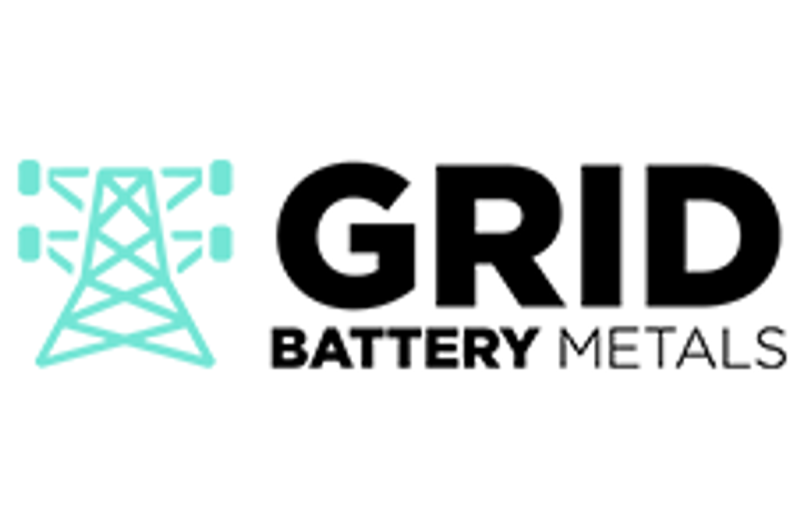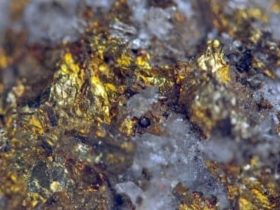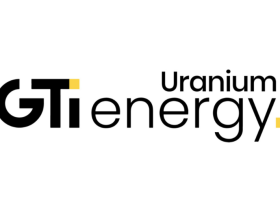Overview
Grid Battery Metals (TSXV:CELL; OTCQB:EVKRF) is a Canadian-based exploration company focused on high-value battery metals required for the electric vehicle (EV) market. The company, formerly called Nickel Rock Resources, changed its name to Grid Battery Metals in April 2023 and started trading on the TSXV under the ticker CELL.
Grid is focused on EV battery metals exploration through its highly prospective lithium and nickel properties in North America. Grid has three lithium properties in Nevada: Texas Springs, Clayton Valley, and Volt Canyon. The Texas Springs Property, located in Elko County, covers approximately 2,500 hectares and is adjoining the southern boundary of the Nevada North Lithium Project owned by Surge Battery Metals (TSXV:NILI). Surge recently announced high-grade lithium of up to 8,070 parts per million (ppm) lithium on the Nevada North Lithium project, which increases the likelihood of a large-scale high-grade lithium discovery at Texas Springs.
The company has completed the first phase of its initial exploration program at Texas Springs, which included a CSAMT geophysical survey and a detailed soil sampling on a 50-meter by 100-meter spacing. Results from these two exploration programs will be key to determining its 2024 exploration plan and possible drilling locations for clay-based lithium targets.
The 2,300-acre Clayton Valley property, is immediately north of Albemarle’s (NYSE:ALB) Silver Peak Lithium Project, the only producing lithium mine in North America. The property has strong potential to host both lithium brine deposits as well as clay-hosted deposits.
The Volt Canyon lithium property features sediment-hosted lithium clay targets and has excellent accessibility, enabling exploration and exploitation throughout the year. Although limited exploration has been conducted in the immediate area, regional sediment samples in the region taken by the US government returned up to 108 ppm lithium near the property.
The exploration programs on these projects are fully funded through 2024, given Grid’s total available liquidity of approximately C$9 million (including marketable securities).
The shareholders should benefit from the company’s strategy of divesting its nickel assets into a separate public company. Grid announced plans to spin off its British Columbia nickel property into a new company (SpinCo) which will be listed on the TSX Venture Exchange. It is anticipated that each Grid shareholder will receive 1/20 of a SpinCo share for each Grid common share held. This is a win for shareholders as it gives them an equity interest in a new public company at no additional cost.
Grid’s management and geological team has been actively exploring for EV battery metals in Nevada for over a decade. They have been successful in finding and funding new lithium discoveries and had a number of successful exits from companies, the most recent being Surge Battery Metals, where they were responsible for the discovery of the Nevada North Lithium Project. The management’s successful track record of lithium exploration in Nevada provides confidence about the company’s future.
Net-zero targets and calls from policymakers to move towards cleaner transportation have led to an increase in focus on EVs. Auto manufacturers worldwide are producing more EVs for sale each year. Canalys’ latest research shows worldwide sales of EVs grew by 49 percent to 6.2 million units in the first half of 2023. The overall share of EVs reached 16 percent of the global light vehicle market in the same period, a significant increase compared to 12.4 percent from the first half of 2022. The United States is one the fastest growing EV market with a 97-percent year-over-year growth in the first half of 2023.
The support from both the US and Canadian governments through subsidies and favorable legislation continues to drive EV adoption. In particular, both countries have committed to supporting the mining industry for key battery metals with legislation like the US Inflation Reduction Act, which provides both financial and functional support to the mining industry. Buoyed by government policy, US electric vehicle sales are projected to surpass 4.6 million units by 2030 (versus the 2023 estimate of 1.3 million).
Automakers cannot produce electric vehicles without access to battery metals such as lithium and nickel. Fear of missing out is pushing automakers to lock supplies of minerals for electric vehicle batteries. As such, we are seeing increasing partnerships between miners and auto OEMs. Automakers, including General Motors, Ford, BMW, Tesla and Stellantis, have committed large investments in direct financing of mines. We see more carmakers following suit as they strive to own the full supply chain from mine to product.
Company Highlights
Grid Battery Metals is a Canadian-based exploration company focused on high-value battery metals required for the electric vehicle (EV) market. The company has three highly prospective lithium properties in Nevada, USA: Texas Springs, Clayton Valley and Volt Canyon. In addition, it holds a nickel project, Grid Nickel Group, based in British Columbia, Canada.As Grid focuses on its lithium projects in Nevada, it plans to spin out its nickel property in British Columbia into a new company (SpinCo) over the next three to six months. SpinCo will be listed as a public company on the TSX Venture Exchange (TSXV), with each Grid shareholder receiving 1/20 of the SpinCo share at no additional cost.All three lithium projects are in the early stage with exploration planned for 2024. The exploration programs on these projects are fully funded through 2024, given Grid’s total available liquidity of approximately C$9 million (including marketable securities).Grid’s management and exploration team has been actively exploring for EV battery metals in Nevada for over a decade, and it has been very successful in finding and funding new lithium discoveries, the most recent being the discovery of the Nevada North Lithium Project.
Key Projects
Texas Spring Project, Nevada
The Texas Spring Lithium Project, located in Granite Range, Nevada, is 100 percent owned by the company. The project covers approximately 400 hectares (988.4 acres) of area with 34 full lode claims and 30 partial lode claims. It is adjacent to the southern boundary of the Nevada North Lithium Project, owned by Surge Battery Metals. Surge’s initial drilling efforts have successfully identified lithium-rich clay deposits. In fact, a recent discovery in September 2023 showed values of up to 8,070 ppm of lithium.
The proximity to Nevada North Lithium certainly increases optimism for the Texas Spring Project. On top of that, the key founders and members of Surge’s geological team are also the founding management team of Grid, which further increases confidence in the project. The project enjoys excellent infrastructure in terms of paved highways and country roads.
The company recently completed the first phase of its initial exploration program at Texas Springs which included a CSAMT geophysical survey and a detailed soil sampling. Together, they would help predict geological structure and possible drilling locations for lithium targets.
Clayton Valley Project, Nevada
The Clayton Valley Lithium Project, located in Clayton Valley Nevada, is 100 percent owned by the company. The project is spread over approximately 930 hectares (~2,300 acres) with 118 claims. The project is located approximately 344 kilometers (~214 miles) from Reno in the northwest and Las Vegas in the southeast. Moreover, the property is around 315 kilometers (~196 miles) from the Tesla giga-factory and features good infrastructure with excellent road access and a nearby electrical substation.
The project claims are adjacent to the Silver Peak Lithium Project of Albemarle Corporation, which is the only producing lithium mine in North America. Clayton Valley’s lithium is contained in both underground reservoirs (aquifers) in the form of salty groundwater (brine), and in clay-hosted deposits. Historic exploration work dating back to 2021, which included three reverse circulation holes, has inferred the existence of a graben that may be a sub-basin of the larger Clayton Valley basin and may represent a secondary trap for lithium brines.
Volt Canyon Project, Nevada
The Volt Canyon Lithium Project, located in Monitor Valley, Nevada, is 100 percent owned by the company. The project covers an area of approximately 635 hectares (~1,569 acres) with 80 claims and is located approximately 122 kilometers northeast of Tonopah, Nevada. It benefits from excellent accessibility that enables exploration throughout the year.
Although limited exploration has been conducted in the immediate area, regional sediment samples in the region taken by the US government returned up to 108 ppm lithium near the property. The deposit’s origin is thought to be similar to Clayton Valley clay deposits, located about 180 kilometers to the south.
The exploration program includes surface sampling, auger or push drill water sampling along with geophysical work to identify drilling sites for an initial drill test on the property. Subsequently, additional surface and subsurface sampling will be executed in the form of drilling.
Grid Nickel Group, Central B.C., Canada
The Grid Nickel Group is a nickel project located in Central British Columbia, Canada, involving 17 mineral claims in three groups – Nickel West, Nickel Central and Nickel South. The company has 100 percent interest on ~6,125 hectares with a 2 percent net smelter royalty and has the option to acquire 100 percent interest on an additional 1,400 hectares. The project is located approximately 100 kilometers (~62 miles) northwest of Fort St. James. The project enjoys good infrastructure in terms of paved and gravel roads, access by helicopter, a rail line at a short distance, and hydroelectric power lines crossing the region.
The company’s project area is in close proximity to FPX Nickel’s Decar Project & Baptiste Nickel Deposit, one of the world’s most robust large-scale nickel projects. The mineral claims are partially underlain by rocks similar to the Decar project, where mineralization includes nickel, cobalt and chromium. Exploration reports for the property date back to 1974 and some nickel mineralization occurs as awaruite, which is a naturally occurring nickel-iron alloy important in the manufacture of environmentally efficient batteries for the electric vehicle market.
The Grid Nickel Group project remains a non-core project for Grid and is planned to be separated into a new public listed company via a spin-off in the next three to six months. Each Grid shareholder will receive their proportionate share in the new company (SpinCo) at no additional cost. It is expected that for every 20 shares of Grid held, a shareholder will receive one share of SpinCo. SpinCo plans to raise $2 million in financing to fund its exploration program at the time of its public listing.
Management Team
Tim Fernback – President & CEO
Tim Fernback holds a Bachelor of Science from McMaster University in Hamilton, Ontario and an MBA with a concentration in finance from the University of British Columbia. He also holds a Certified Professional Accounting (CPA, CMA) designation in Canada. He has more than 30 years of experience in finance with both public and private companies in Canada and is currently a director of several publicly traded companies.
Robert Guanzon – CFO
Roberts Guanzon holds a Bachelor of Science degree in accounting and has rich experience in finance, accounting and corporate strategy. He serves as the CFO of several junior resource companies listed on the TSXV.
Tina Whyte – Corporate Secretary
Tina Whyte has more than 20 years of experience in the corporate and securities industry. She is an expert in several areas including corporate governance, continuous disclosure, financing transactions and regulatory filings and compliance. She also holds corporate secretary positions with other publicly listed companies.
Jay Oness – Director
Jay Oness has rich experience in all aspects of corporate management including strategic planning, business development and investor relations for public companies. He has over 20 years of experience and has served as a director, senior executive and consultant to public companies in the resource and non-resource sectors. He is currently VP of business and corporate development of Southern Silver Exploration.
Robert Setter – Director
Robert Setter holds a degree in economics and has over two decades of experience in business development, marketing and research. Previously, he has served as the senior financial editor for Report on Mining. He currently sits on the boards of three other listed mining companies.
Ali H. Alizadeh – Director
Ali H. Alizadeh is a senior geologist possessing extensive experience in mineral exploration & project management. He has been responsible for several uranium, gold and base metal projects during his exploration career with various exploration companies. He graduated with a geology degree in 1991, a M.Sc. in petrology in 1995, and an MBA at Queen’s University in 2010. He is also a member of the Association of Professional Engineers and Geoscientists of British Columbia.
Seth Cude – Geological Advisor
Seth Cude is a certified professional geologist with over a decade of experience in the minerals industry. He also serves as a principal geologist with Rangefront Mining Services focusing on lithium exploration.
Jeremy Hanson – Geological Advisor
Jeremy Hanson is a professional geoscientist with a decade of experience in mineral exploration in Canada. He is also a founder of Hardline Exploration, a geological consulting firm focused on Western Canada.
*This article was written in collaboration with Couloir Capital.





